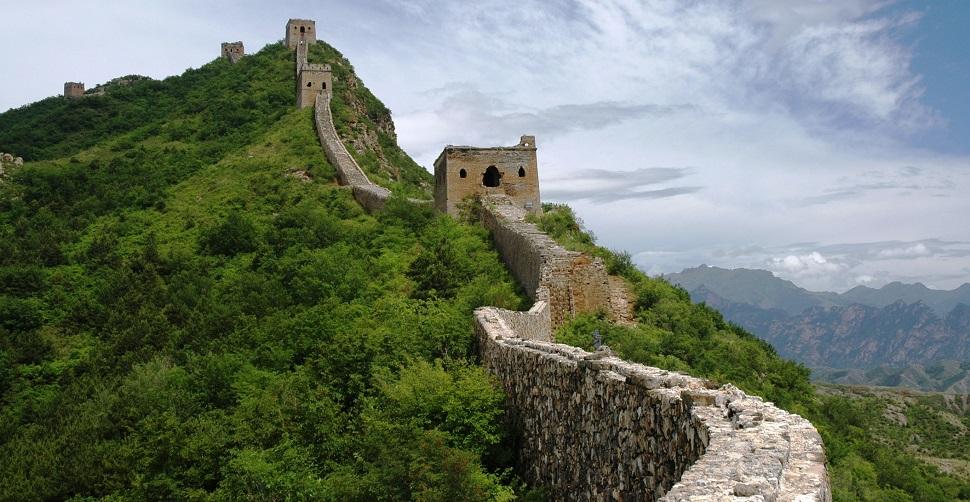China's Wild Great Wall
“He who has not climbed the Great Wall is not a true man”. So goes a famous Chinese saying. Understand the true meaning of this as you sit atop the Great Wall of China, after having conquered one of the greatest structures ever built by man.
One of the first stops for almost every visitor to China is the Great Wall. However, many of the sections closest to Beijing have been heavily restored and are overcrowded with tourists. Those who dare to head further out in search of a more adventurous experience are greatly rewarded for their efforts.
The trek from Jinshanling to Jinshanling East is a popular way to visit the more impressive and unrestored sections of the Wall. If you venture even further off the beaten track however, to Gubeikou or beyond, you may actually find yourself alone on this incredible structure. These areas are often referred to as the ‘Wild Great Wall’, and unlike the more popular sections closest to Beijing, such as Badaling, these sections show very few signs of development, and give you a chance to see this awe-inspiring structure in its true glory.
The Great Wall can be visited as a day trip from Beijing, or if you prefer, we can arrange multi-day hikes. There is a growing number of boutique hotels and guesthouses near the Great Wall, or for the more adventurous we can provide an overnight camping experience for you to spend a night sleeping under the stars.
When in a city like Beijing, it can sometimes be hard to imagine that serenity could be just a few hours away. But those who take the opportunity to explore the ‘Wild Wall’ may come across something unthinkable in the seething metropolis of Beijing: a moment of perfect silence. Here there are no chattering tour groups, no big hotels, no tacky tourist shows, and no touts trying to sell you trinkets you don’t need. Out here, it is just you, the Wall, and the never-ending mountains rolling away into the distance. Visit in the summer and you will be surrounded by a sea of green. Brave it in the winter and you may be rewarded with crystal clear blue skies and not another soul in sight.
Here are some of our favourite hikes around Beijing:
Jinshanling to Jinshanling East
This is probably the most famous and popular of the Beijing area hikes. The walk used to stretch all the way to Simatai, but now is only accessible as far as Jinshanling East Gate. The full hike will take most people between three and four hours, and covers a mixture of restored and unrestored sections.
Gubeikou to Jinshanling
Gubeikou sees fewer tourists than its neighbour Jinshanling. The stretch from Gubeikou to Jinshanling is one of our favourites, and is almost entirely unrestored. Some parts of this walk are along sections of the wall which are in serious states of disrepair, but the hike is suitable for people of most fitness levels and should take around five hours to complete. A section of the wall is off-limits to hikers as there is a military base nearby, so you will make a detour to walk alongside the wall for a time instead, before re-joining it a bit later on.
Jiankou to Mutianyu
Mutianyu is fully restored and is a popular spot for day-trippers and families. If you are looking for a challenge however, then nearby Jiankou is one of the steepest sections of Beijing’s Great Wall, and the four to five hour hike from Jiankou to Mutianyu is one of the most difficult. Your efforts are greatly rewarded with some truly spectacular views, and you are unlikely to be sharing the wall with many other people. The Wall at Jiankou is completely wild and unrestored and the walking trails can be treacherous, so we recommend this one for people with a good level of fitness and a strong sense of adventure!
Huanghuacheng
This is a lesser visited section of the Great Wall, which hasn’t made it on to the radar of most tourists. Also known as the Water Great Wall, Huanghuacheng has a spectacular setting right by a lake, and the wall itself is half restored and half wild, with some sections immersed in water.
The Great Wall is not just confined to Beijing. You can discover some amazing sections across China. Two of the most famous are the opposite ends of the Great Wall – one is the dramatic fortress in the desert at Jiayuguan in Gansu Province, and the other at Laolongtou (Old Dragon’s Head) where the Wall meets the sea at Shanhaiguan. Remote sections of the Great Wall still remain in Inner Mongolia, Ningxia, and Gansu Provinces. Some impressive passes can still be seen in Shanxi and Hebei Provinces, which are closer to key cities such as Beijing and Xi’an and could be incorporated into a historical tour of Central and Northern China.
Be aware that some parts of the unrestored Great Wall of China are unstable, and there are no safety rails out here. Some of the more remote sections should not be attempted by solo travellers, particularly in the winter when ice can make the hike treacherous. But for the most part, as long as you prepare accordingly, and take care on the more unstable sections, traversing the ‘Wild Wall’ is a challenge well worth undertaking.
Our tour The Great Wall & Beyond includes several days hiking the Wild Great Wall, or we can tailor-make an experience for you.








